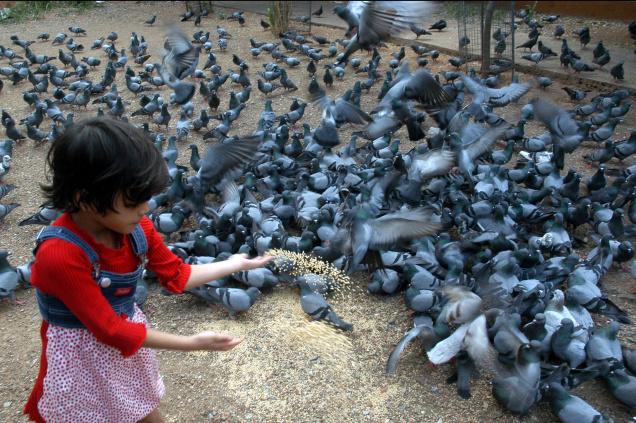
by Pigeon Patrol | Jul 6, 2023 | Bird Spike, Pigeon Spikes, Pigeons, Pigeons in the News, Raccoons, Sparrows, UltraSonic Bird Control
People often have no previous experience with pigeons or bird rescue. They did not wake up in the morning expecting to cross paths with a pigeon, but then an unexpected guest lands in their backyard, or on their roof, and it seems like something other than a random city pigeon. Perhaps it has an unusual appearance, or bands on its legs, perhaps it is alone with no flock, perhaps it seems weak or unable to fly. There’s no doubt that this is a pigeon in need of help, either because it is ill, starving, or a domestic breed lacking in survival skills. Pigeons and doves are preyed upon by hawks, ravens, gulls, cats, raccoons, rats, and more and, if you can catch the bird, she needs to be caught.
But how to catch?
First, rest assured that catching a pigeon is indeed possible, and safe- for both the bird and for you. Your catching the bird will be a lot safer for her than if a predator catches her. You will not scare a pigeon to death or give her a heart attack. And pigeons are harmless to us. They can’t really bite (no teeth and their beak is soft and weak) and, contrary to popular belief, you are highly unlikely to ever be made sick by a pigeon. There are very few diseases that you can catch from them and you are far, far more likely to get sick from a dog or cat (or be struck by lightning, actually). Simple soap-and-water hand washing after handling any animal can reduce the chances of illness to near zero.
So, let’s catch the pigeon!
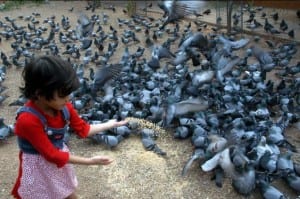
There are a few different methods that have a good success rate. Much will depend on what you are most comfortable with and what kind of shape the pigeon is in.
The first and easiest method is simply to scoop the pigeon up in your hands. People often tell us that they have found a pigeon that seems exceptionally tame and friendly and allowed itself to be picked up. If you can just pick it up, though, there’s a good chance that the pigeon is in real trouble. It may be starving, dehydrated, and/or injured.
A bird that tries to get away from you, but is weak or unable to fly, can often be walk-herded into a corner or inside through an open door and then caught (by hand or with a blanket, towel, or sweater). Drop the cloth over the bird and gently pick it up inside the cloth. Make sure the bird’s wings are folded against its sides, and hold it so that your hands encircle the wings and body, to prevent panicked flapping. A bird in this condition will likely need to be assessed by an expert.
Is your visitor lively? Flies away when you get too close? It’s good to see a strong and healthy pigeon, but this will present a challenge in actually getting your hands on the bird. The method that most often succeeds in catching a bird that is unwilling to be caught, is the crate-and-string method. You’ll need a cage or crate of some kind — a black wire dog crate works well. Put seeds and water deep in the center of the cage (beyond the reach of a clever bird who pokes her head in from the sides or back), and a thin trail of seeds leading up to the cage door (not too much, the bird needs to be hungry to risk entering what they know is a trap). Pigeons are especially fond of chopped peanuts and safflower seeds, but an ordinary bird seed mix for either pet or wild birds will work. Even rice -cooked or raw- can work in a pinch (there is a persistent myth that rice is harmful for birds, but it’s actually fine to use) or dry lentils, quinoa, crushed cereal, etc. will work for a hungry bird.
You’ll want to tie a long piece of string to the cage door in such a way as, when you pull it, the door pulls closed, and then sit at some distance, with the string in your hand. You might need to be out of the bird’s line of vision if it is particularly skittish. Eventually the bird should enter the cage to get the food, at which point you will pull on the string to close the door. Be patient. This can take some time (days even, just leave the door open when you’re not around & only put food inside so they have to go in) but is a very reliable and bird-friendly method. If the pigeon panics after the door is closed and starts thrashing around, cover the crate with a blanket to help calm her and bring the crate and bird indoors to safety. (You can’t leave her outside as predators can do terrible damage to an unsafely confined bird.) And don’t feel badly about having caught her. You most likely just saved her life and she’ll calm down.
Another method for catching a healthy unwilling pigeon is what we call the Wile E. Coyote box trap. Take a medium size box or laundry basket, turn it upside down and prop up one end with a stick. Place food and water underneath the box, with a trail leading up to it. Tie a string to the bottom part of the stick, and sit at a distance away with the other end of the string in your hand. When the pigeon ventures under the box to get the food, pull the string to remove the stick, and the box will fall, trapping the pigeon underneath.
You will at this point need to carefully reach underneath the box to get the pigeon. You won’t be able to see what you’re doing, because if you lift the box too high the pigeon will escape. You might try putting a big blanket over the box and yourself, while you try to catch the pigeon. Your neighbors will wonder about you. But it can work.
You can also buy or create a humane trap with a one-way door so that once they’ve gone in, they can’t get back out. (Monitor the trap closely though and do not leave out unsupervised or overnight. Once trapped, the bird will attract and be terribly vulnerable to predators including rats, cats, hawks, raccoons, ravens, gulls, dogs, etc.)
A third method for catching a pigeon is to find where it is roosting at night. Pigeons have very poor night vision, and tend to hold still in the dark if they sense danger approaching, hoping that it passes them by. You may be able to climb a ladder and grab the pigeon with your hands. This works best if done in the dark so turn lights off and let your eyes adjust (yours will, the pigeon’s won’t). Then very quietly and without hesitation, grab the bird with both hands around the body. Be prepared for her to startle and try to get away. Don’t let go and make that first grab count because if she gets away, she’ll risk flying off even in the dark.
The final method is one that takes a bit of practice, plus good reflexes and careful timing. It is best used on a pigeon that is hanging out with a wild flock, and it’s the method that we use for “destringing” work, when we are trying to catch wild pigeons who are suffering from injuries to their feet caused by string and debris wrapped around their toes (ever wondered why city pigeons often have missing toes or deformed feet? Now you know!) With this method, you’ll spread a generous amount of food on the ground, in a line that measures three or four inches wide and about a foot and a half long. Stand fairly close to the food with your feet spread a distance apart. The pigeons should approach and cluster around, trying to eat as much as possible and certainly more than the pigeons on either side of them. They will be eyeing the food and each other, while you stand nearby, periodically sprinkling more food. Keep your eye on the pigeon you want to catch. Slowly advance until your open hand is hovering, palm down, immediately above the pigeon, then, in one swift motion, drop your hand down, pinning the bird to the ground. It really helps to practice this multiple times, using a shoe or a loaf of bread in place of the pigeon. You’re going to be going very quickly from a standing to a crouching or lunging position, and you don’t want to topple over, so practice the motion until you feel confident.
If you try and miss, the pigeons may scatter and be skittish for a time, but overcoming their caution is sometimes just a matter of moving the food to a slightly different location. You usually get multiple chances. This is not because pigeons are stupid (they are not), but because pigeons are more trusting than most birds (and very hungry). Despite a long history of mistreatment at the hands of human beings, their species, in general, has a benevolent view of ours.
Once caught, you must bring the bird indoors to safety. The vast majority of cages are made only to confine a bird indoors and are not at all safe outside. Leaving a bird outdoors in an indoor cage is basically creating a foraging toy for predators. Hawks, raccoons, cats, rats can all do terrible damage to an unsafely caged bird, right through the bars. Once safely indoors, you need to find a pigeon-friendly expert to help you assess the bird. Many are in critical condition by the time they are caught but recognizing that and supporting them through it takes knowledge and experience.
Source
Pigeon Patrol Products & Services is the leading manufacturer and distributor or bird deterrent (control) products in Canada. Pigeon Patrol products have solved pest bird problems in industrial, commercial, and residential settings since 2000, by using safe and humane bird
deterrents with only bird and animal friendly solutions. At Pigeon Patrol, we manufacture and offer a variety of bird deterrents, ranging from Ultra-flex Bird Spikes with UV protection, Bird Netting, 4-S Bird Gel and the best Ultrasonic and audible sound devices on the market today.
Voted Best Canadian wholesaler for Bird Deterrent products ten years in a row.
Contact us at 1 877-4-NO-BIRD,(604) 585-9279 or visit our website at www.pigeonpatrol.ca
Pigeon/Pigeon Patrol / Pigeons Roosing / Vancouver Pigeon Control / Bird Spikes / Bird Control / Bird Deterrent / PIgeon Deterrent / Surrey Pigeon Control / Pest / Seagull deterrent / Vancouver Pigeon Blog / Birds Inside Home / Pigeons in the cities / Ice Pigeons / What to do about pigeons / sparrows, Damage by Sparrows, How to Keep Raccoons Away, Why Are Raccoons Considered Pests / De-fence / Pigeon Nesting / Bird Droppings / Pigeon Dropping / woodpecker control / Professional Bird Control Company / Keep The Birds Away / Birds/rats/seagull/pigeon/woodpecker/dove/sparrow/pidgeon control/pidgeon problem/pidgeon control/flying rats/pigeon problems/ bird netting/bird gel/bird spray/bird nails/bird guard
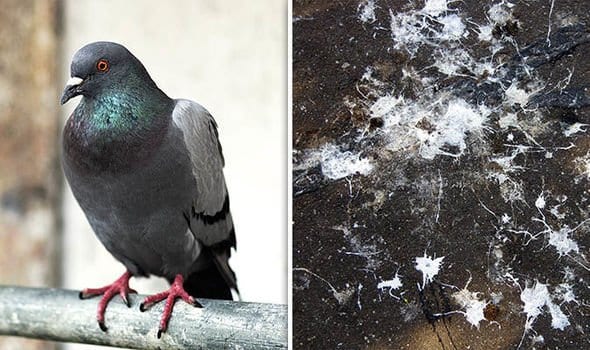
by Pigeon Patrol | Jun 30, 2023 | Bird Spike, Pigeon Predators, Pigeon Spikes, Pigeons, Pigeons in the News, Raccoons, Sparrows, UltraSonic Bird Control
If you don’t want pigeons nesting around your property, there are a number of ways you can scare them off when it looks like they might be getting comfortable.
Spray With Water
A great way to scare pigeons away without causing them any harm is to spray them with the garden hose. It’s highly unlikely they’ll appreciate getting drenched so you can guarantee they won’t hang around for long.
It’s important to do this when the birds first arrive so they know this isn’t a comfortable place to set up home. If you wait until they’ve set up a roost, not even a good soaking will get them to budge.
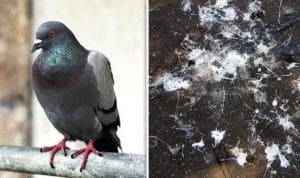
Install Scare-Pigeons
These lightweight kites are usually sold in the form of hawk silhouettes and when placed where pigeons usually roost, they’re a great scare tactic. A good tip is to move the decoy on a regular basis because pigeons will get used to its presence and won’t be scared of it anymore – especially because it doesn’t make a noise.
Use Reflective Surfaces
When the sun hits a reflective object, it creates a prism effect which interferes with pigeons’ eyesight. If your roof, balcony or windowsills are covered with anything from reflective tape to foil balloons, it’s highly unlikely they will settle. Another great way to deter pigeons from settling around your property is to hang old CDs from nearby trees or along awnings.
Install Sloped Sheathing
To keep pigeons off ledges and other flat surfaces, cover them with a sloping piece of sheet metal. If they physically can’t settle somewhere then they won’t.
When To Call A Pest Controller
The best way to deal with a pigeon problem is to call a pest controller. They will know exactly how to get rid of them and importantly, how to keep them away for good.
Pest control companies are well training on what systems to install to provide the best solution to your problem. From installing a netting system to anti-pigeon spikes, or wire systems on window ledges and leading edges.
What Won’t Work
There are many myths surrounding pigeons and how to scare them away but unfortunately, most of them are a waste of time because they simply don’t work.
- Noises – Everyone assumes that loud noises will scare these birds away but if you consider the pigeon population of London, it’s evident that this simply isn’t true. Pigeons are city birds – they’re used to loud noises and they don’t startle easily so unfortunately, no amount of noise is likely to drive them away.
- Ultrasonic Noises – Ultrasonic noise may seem like a great way to scare off pigeons but sadly, this method doesn’t work either. Ultrasonic sound waves bounce off objects, creating spots where pigeons can completely avoid the sound. Not only will you still be faced with a pigeon problem, these devices can also damage the hearing of cats and dogs.
- Ignoring the problem – Sadly burying your head in the sand won’t make these pests go away. Once they have found an Idyllic home location they will settle for life, so If left untreated the population will grow and grow, and so will the impact on your premises and surrounding area
Source
Pigeon Patrol Products & Services is the leading manufacturer and distributor or bird deterrent (control) products in Canada. Pigeon Patrol products have solved pest bird problems in industrial, commercial, and residential settings since 2000, by using safe and humane bird
deterrents with only bird and animal friendly solutions. At Pigeon Patrol, we manufacture and offer a variety of bird deterrents, ranging from Ultra-flex Bird Spikes with UV protection, Bird Netting, 4-S Bird Gel and the best Ultrasonic and audible sound devices on the market today.
Voted Best Canadian wholesaler for Bird Deterrent products ten years in a row.
Contact us at 1 877-4-NO-BIRD,(604) 585-9279 or visit our website at www.pigeonpatrol.ca
Pigeon/Pigeon Patrol / Pigeons Roosing / Vancouver Pigeon Control / Bird Spikes / Bird Control / Bird Deterrent / PIgeon Deterrent / Surrey Pigeon Control / Pest / Seagull deterrent / Vancouver Pigeon Blog / Birds Inside Home / Pigeons in the cities / Ice Pigeons / What to do about pigeons / sparrows, Damage by Sparrows, How to Keep Raccoons Away, Why Are Raccoons Considered Pests / De-fence / Pigeon Nesting / Bird Droppings / Pigeon Dropping / woodpecker control / Professional Bird Control Company / Keep The Birds Away / Birds/rats/seagull/pigeon/woodpecker/dove/sparrow/pidgeon control/pidgeon problem/pidgeon control/flying rats/pigeon problems/ bird netting/bird gel/bird spray/bird nails/bird guard
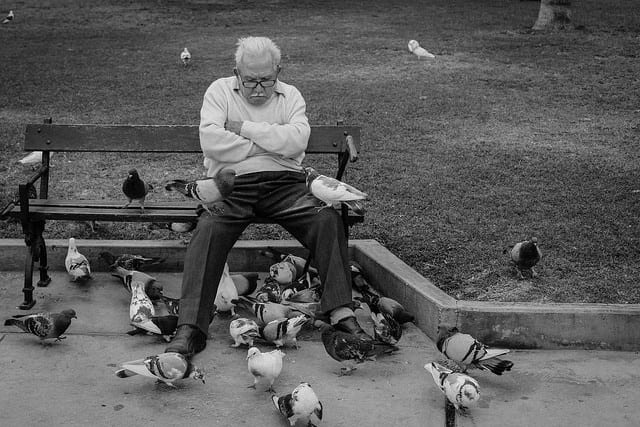
by Pigeon Patrol | Jun 30, 2023 | Bird Spike, Pigeon Predators, Pigeon Spikes, Pigeons, Pigeons in the News, Raccoons, Sparrows
From telephone wires to building ledges to public fountains, pigeons can be found nearly everywhere in a city. Unfortunately, that often means you can find them on your property, too. One pigeon may not be cause for alarm, but if pigeons have become regular visitors to your yard, you may have a problem on your hands. No homeowner wants to have to put up with these pests, but you can’t exactly just order them to leave. What should you do when you have a growing pigeon infestation? Here’s what you need to know.
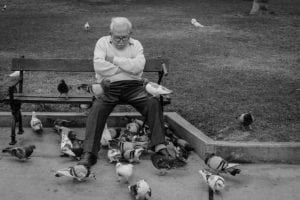
How Can I Tell if I Have a Pigeon Problem?
Much of the time, pigeon infestations are impossible to miss. Pigeons are relatively large, and their sounds are difficult to ignore. If you’re away from home a lot, or if you have a large yard, it may be easier for you to overlook a burgeoning pigeon infestation. If you find feathers, nesting materials, or pigeon droppings in your yard or on your roof, it’s a likely warning sign that the pests have invaded your property.
Will Pigeons Go Away if I Leave Them Alone?
You might be tempted to ignore the issue and just hope that the pigeons will go away on their own—and, on occasion, they will. It’s more likely, however, that the pigeons will not want to leave a place where they can roost and raise families undisturbed. This means that you’ll eventually begin to see more and more pigeons until your yard is overwhelmed with the birds. As a rule, the longer you wait to deal with a pest infestation, the larger that problem will become.
Can Pigeons Do Damage to My Property?
While some birds might be a welcome presence on your property, pigeons generally are not. There are good reasons for that: Pigeons make a mess, they’re noisy, and they’re a health hazard. They can also wreak extensive—and expensive—damage on your property, including your roof, your car, and even your solar panels. They can ruin your garden or your landscaping. In other words, these pests could end up costing you a lot of money. If you have pigeons on your property, you need to do something about it as soon as possible.
Can I Solve a Pigeon Problem On My Own?
You might assume that it would be easy to get rid of pigeons. Unfortunately, it takes more than going outside and waving your arms at the birds or shouting at them to discourage them from coming back. You might temporarily scare the birds away, but they’re likely to return as soon as you go back inside. Don’t bother using popular pigeon-removal methods such as cayenne pepper—these techniques don’t work. Putting up plastic owls and other deterrents also isn’t very likely to keep pigeons out of your yard. You shouldn’t waste time with these do-it-yourself methods.
What Can I Do to Get Rid of Pigeons?
The best thing to do if you have a pigeon infestation is to call a qualified pigeon control professional. A pigeon control company can put up structures such as netting to prevent pigeons from nesting or roosting around your property. They can also clean and sanitize the areas where the pigeons were taking up residence, helping to keep you and the other members of your household safe. Finally, a pigeon control company may offer a guarantee on its services, so you won’t have to worry about the pests coming back in the future. When it comes to pigeon control, there’s no substitute for experience and professional equipment.
How Can I Prevent Pigeons from Returning?
After you’ve paid to get rid of pigeons once, it’s unlikely that you’ll ever want to have to deal with the problem again. In almost all cases, pigeon abatement is sufficient to keep the pests away. There are some other things you can do, however, to discourage pigeons from making a home on your property. Make sure al trash containers are covered, and clean up any food scraps on your patio right away. Don’t leave pet food to sit outdoors overnight. You should also look for standing water, which can attract the birds. Finally, keep an eye out for the birds and be sure to call your pigeon control company again if you see them roosting anywhere on your property.
Source
Pigeon Patrol Products & Services is the leading manufacturer and distributor or bird deterrent (control) products in Canada. Pigeon Patrol products have solved pest bird problems in industrial, commercial, and residential settings since 2000, by using safe and humane bird
deterrents with only bird and animal friendly solutions. At Pigeon Patrol, we manufacture and offer a variety of bird deterrents, ranging from Ultra-flex Bird Spikes with UV protection, Bird Netting, 4-S Bird Gel and the best Ultrasonic and audible sound devices on the market today.
Voted Best Canadian wholesaler for Bird Deterrent products ten years in a row.
Contact us at 1 877-4-NO-BIRD,(604) 585-9279 or visit our website at www.pigeonpatrol.ca
Pigeon/Pigeon Patrol / Pigeons Roosing / Vancouver Pigeon Control / Bird Spikes / Bird Control / Bird Deterrent / PIgeon Deterrent / Surrey Pigeon Control / Pest / Seagull deterrent / Vancouver Pigeon Blog / Birds Inside Home / Pigeons in the cities / Ice Pigeons / What to do about pigeons / sparrows, Damage by Sparrows, How to Keep Raccoons Away, Why Are Raccoons Considered Pests / De-fence / Pigeon Nesting / Bird Droppings / Pigeon Dropping / woodpecker control / Professional Bird Control Company / Keep The Birds Away / Birds/rats/seagull/pigeon/woodpecker/dove/sparrow/pidgeon control/pidgeon problem/pidgeon control/flying rats/pigeon problems/ bird netting/bird gel/bird spray/bird nails/bird guard
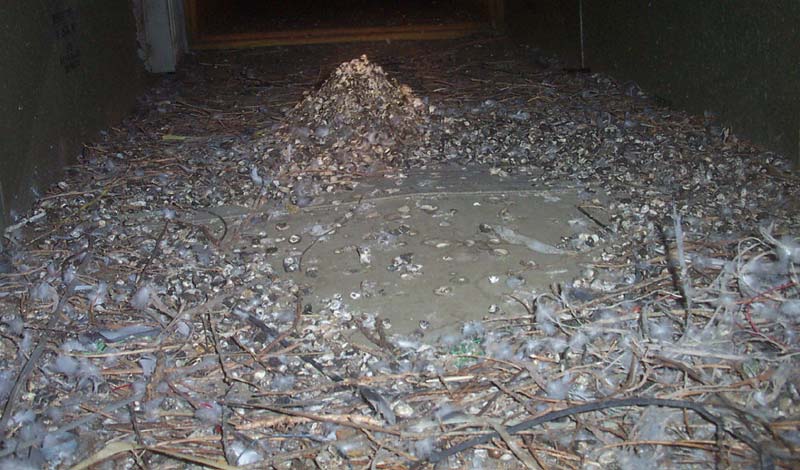
by Pigeon Patrol | Jun 30, 2023 | Bird Spike, Pigeon Spikes, Pigeons, Pigeons in the News, Raccoons, Sparrows, UltraSonic Bird Control
Q: I live on the 15th floor of an Upper East Side co-op with windows facing First Avenue. Pigeons are roosting on my window ledge. The birds’ vocalization is loud enough to wake me up in the morning and they leave behind gray and white stains from their droppings. I shoo the birds away when I’m home, but cannot do this all day. I want to be able to open my window in the spring without worrying that the germs from their droppings will enter my room. What can I place on my window ledge to discourage the pigeons from roosting there? I do not want to use anything that could fall off the ledge, endangering a pedestrian below, or poison the birds. What is a safe remedy?
A: You should be able to open your windows this spring without worrying that a pigeon will fly into your apartment or its droppings will soil your home. While their droppings do not generally pose a serious health risk, they are still unsanitary, and gross. But your building, not you, should get the birds off your ledge. As a shareholder, you are responsible for everything inside the walls of your apartment, and the co-op board is responsible for the building. So the board needs to figure out how to get the birds to find a new home.
“Residents should not attempt a solution on their own,” said Daniel Wollman, the chief executive of Gumley Haft, a Manhattan property manager.
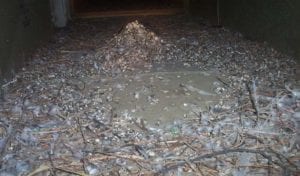
Write the managing agent and the co-op board a letter alerting them to the pigeon problem and insisting that they fix it. If the birds are nesting on your ledge, they are probably nesting on another resident’s, too. In the letter, ask that management also clean the ledge of any droppings.
The building should be able to get the birds to nest elsewhere without damaging the facade or risking the safety of anyone on the street below. For example, at a Gumley Haft-managed property with a pigeon problem in its inner courtyard, management suspended netting over the area to keep the birds away.
Netting will not solve the problem at your building, but there are other methods. John McGowan, the director of operations for Bugged Out Pest Management in Brooklyn suggested that your building consider using Bird Barrier Optical Gel, a bird deterrent, which he described as “awesome.”
Source
Pigeon Patrol Products & Services is the leading manufacturer and distributor or bird deterrent (control) products in Canada. Pigeon Patrol products have solved pest bird problems in industrial, commercial, and residential settings since 2000, by using safe and humane bird
deterrents with only bird and animal friendly solutions. At Pigeon Patrol, we manufacture and offer a variety of bird deterrents, ranging from Ultra-flex Bird Spikes with UV protection, Bird Netting, 4-S Bird Gel and the best Ultrasonic and audible sound devices on the market today.
Voted Best Canadian wholesaler for Bird Deterrent products ten years in a row.
Contact us at 1 877-4-NO-BIRD,(604) 585-9279 or visit our website at www.pigeonpatrol.ca
Pigeon/Pigeon Patrol / Pigeons Roosing / Vancouver Pigeon Control / Bird Spikes / Bird Control / Bird Deterrent / PIgeon Deterrent / Surrey Pigeon Control / Pest / Seagull deterrent / Vancouver Pigeon Blog / Birds Inside Home / Pigeons in the cities / Ice Pigeons / What to do about pigeons / sparrows, Damage by Sparrows, How to Keep Raccoons Away, Why Are Raccoons Considered Pests / De-fence / Pigeon Nesting / Bird Droppings / Pigeon Dropping / woodpecker control / Professional Bird Control Company / Keep The Birds Away / Birds/rats/seagull/pigeon/woodpecker/dove/sparrow/pidgeon control/pidgeon problem/pidgeon control/flying rats/pigeon problems/ bird netting/bird gel/bird spray/bird nails/bird guard
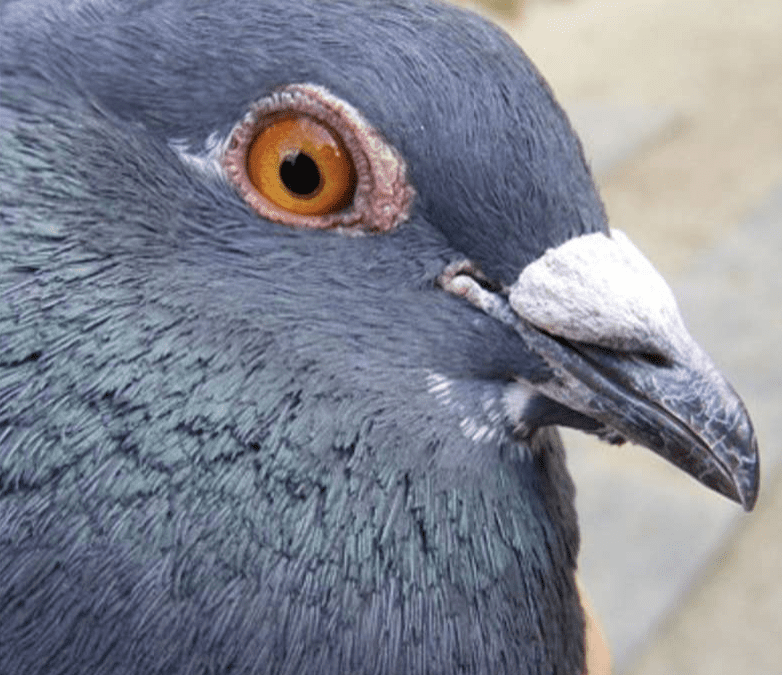
by Pigeon Patrol | Jun 21, 2023 | Bird Spike, Pigeon Predators, Pigeon Spikes, Pigeons, Pigeons in the News, Raccoons, Sparrows
A pigeon takeover can really disrupt your outdoor space. One day you see a few, the next day, a few hundred. Not to mention their droppings can stain or even corrode metal and painted surfaces.
Getting rid of pigeons starts with finding the root cause and planning your defense strategy accordingly. Here’s what could be attracting them and how to humanely get rid of them.
Why Do I Have Pigeons Around My Home?
Especially if you’re not in an urban location, it can be a mystery why pigeons have chosen to flock to your home. Despite their well-known tendency to inhabit cities, pigeons can be found just about anywhere, from large farmlands to small suburban apartments.
These are the main culprits that could be attracting pigeons to your home.
1. There’s a Feast Around
Above all, the pigeon’s main objective is to eat—and their peckish beaks will go for just about anything. They might go for the crops around your home, such as fruits (especially berries), grains, and beans.
If you have a bird feeder, they’ll bully smaller birds away and call upon their pigeon pals to come gorge. There could also be some trash can or compost munchies they’re going after.
Not sure what’s giving them a meal ticket? It helps to observe the pesky birds and note where they gather. Once you pinpoint what they’re pecking at, it will be that much easier to remove the temptation.
2. There’s a Good Perching Spot
Pigeons love a birds-eye view of the surrounding area—what better way to scope out a place to feed or nest? If you’ve got some prime perching real estate around, they’ll be all the more attracted to your property.
Here are a few of their top picks for perching:
- Ledges
- Balconies
- Gutter
- Roof
3. There’s a Suitable Nesting Area
Aside from eating, nesting is a pigeon’s other main objective. They prefer flat, warm, secluded surfaces such as:
- Barns
- Chimneys
- Garages
- Window sills
- Window AC units
- Solar panels
How to Get Rid of Pigeons
Whether it’s the noms or the nesting that has pigeons hooked on your turf, here’s what you can do to keep them away.
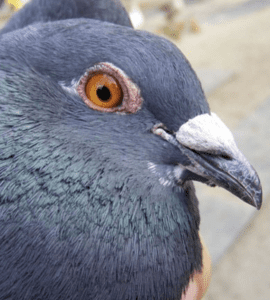
Adjust Your Bird Feeders
Bird feeders are a major attraction to pigeons, but that doesn’t mean you need to bid farewell to all your hungry feathered visitors. By getting feeders pigeons can’t (or don’t want to) access, your favorite songbirds can have their seed and eat it too.
Get a Weight-Sensitive Feeder
Weight-sensitive bird feeders are a great pigeon deterrent (and they’ll also keep ravenous squirrels at bay). These allow lightweight songbirds to munch freely while using weight-sensitive springs to shut feeding ports for pigeons and other heavier visitors.
Use Pigeon-Proof Feeders
Pigeons are large and heavy—and they’re no acrobats. You can deter them by selecting a feeder they can’t use, such as a hanging tube feeder, suet cake, or anything with tiny perches that they won’t be able to sit on.
Put Out Food They Don’t Like
As undiscerning as the pigeon’s appetite is, there are some seeds they tend to stay away from. Here are a few songbird-attracting seeds that pigeons don’t care for:
- Suet
- Nyjer
- Striped sunflower
Avoid the Food They Do Like
In the same vein, you’ll want to avoid the seeds that pigeons find scrumptious, which are often found in less-expensive seed mixes. These include:
Use a Seed Catcher
Those pretty songbirds aren’t the neatest eaters, and pigeons will happily flock to any seed that falls to the ground. If you’re having trouble in this area, consider adding a seed catcher, which is a wide tray that hangs just below the feeder. You can purchase a seed catcher online or attach a tray to your feeder with rope or chains.
Get Anti-Roosting Spikes
Anti-roosting spikes might seem painful at a glance, but they’re more of a visual deterrent than a physical one. Since birds can easily see the spikes, they know they aren’t able to perch and won’t try to do it.
Use a Fearsome Decoy
To keep pigeons away, try putting out a realistic decoy of a predatory animal, such as a snake or an owl. Pigeons tend to wise up to this tactic after a while, so it’s more effective if you move the decoy to different spots periodically. Even still, this is best paired with other solutions and deterrents.
Try a Repellent
Ultrasonic emitters and slippery gel repellents can keep pigeons from hanging out in your yard. However, the downside is that they’ll keep other birds away too. Avoid sticky repellents, as these can trap and injure smaller birds.
Tips for Dealing With Pigeons Around Your Home
While you’re working on giving them the permanent boot, use these tips to manage the pigeons around your home.
1. Don’t Feed the Birds
When pigeons disrupt the feeding of your regular songbird clientele, it’s tempting to throw some bread or cheap seed in a separate location as a diversion. While this presents a temporary solution, you’ll run into trouble when those pigeons tell their buddies about the free food and they all make it a regular place to frequent.
Along with that, be sure to close off or remove other potential food sources, such as trash cans and compost piles.
2. Keep a Consistent Cleanup Routine
While you’re in the midst of a pigeon problem, become well-acquainted with your hose’s power-spray setting. Their corrosive droppings can do serious damage to the surfaces and finishes around your yard, so you’ll want to stay on top of cleanup. Along with that, sweeping and keeping garbage in well-sealed containers can eliminate potential food sources.
3. Deter Pigeons With Reflective Materials
Shiny materials are disorienting and can keep pigeons away from their usual landing spot. Aluminum foil, reflective tape, shiny ribbon, and your old CD collection are all great options.
4. Cap Your Chimney
While it won’t single-handedly prevent a pigeon invasion, investing in a chimney cap is a wise thing to do if you haven’t already. Pigeons have a tendency to nest in chimneys, where they can often get stuck and pass away. That’s not ideal for either of you to go through, so you won’t regret being proactive.
DIY vs. Hire a Pro
Although the risk of pigeon-related illness is low, these birds can harbor disease and parasites. A local bird control service can help you safely deal with them and keep them from coming back. The cost to remove a bird’s nest ranges anywhere from $100 to $2,000.
If you decide to DIY, it’s best practice to wear protective clothing, including eyewear, a mask, and gloves when handling a bird or its droppings.
Additional Questions
How do I get rid of pigeons naturally?
Here are a few scents pigeons can’t stand:
- Cinnamon
- Hot peppers
- Peppermint
- Onion
- Garlic
What are pigeons most afraid of?
Pigeons are most deterred by the sight of predatory birds. These include owls, hawks, and other birds of prey.
Source
Pigeon Patrol Products & Services is the leading manufacturer and distributor or bird deterrent (control) products in Canada. Pigeon Patrol products have solved pest bird problems in industrial, commercial, and residential settings since 2000, by using safe and humane bird
deterrents with only bird and animal friendly solutions. At Pigeon Patrol, we manufacture and offer a variety of bird deterrents, ranging from Ultra-flex Bird Spikes with UV protection, Bird Netting, 4-S Bird Gel and the best Ultrasonic and audible sound devices on the market today.
Voted Best Canadian wholesaler for Bird Deterrent products ten years in a row.
Contact us at 1 877-4-NO-BIRD,(604) 585-9279 or visit our website at www.pigeonpatrol.ca
Pigeon/Pigeon Patrol / Pigeons Roosing / Vancouver Pigeon Control / Bird Spikes / Bird Control / Bird Deterrent / PIgeon Deterrent / Surrey Pigeon Control / Pest / Seagull deterrent / Vancouver Pigeon Blog / Birds Inside Home / Pigeons in the cities / Ice Pigeons / What to do about pigeons / sparrows, Damage by Sparrows, How to Keep Raccoons Away, Why Are Raccoons Considered Pests / De-fence / Pigeon Nesting / Bird Droppings / Pigeon Dropping / woodpecker control / Professional Bird Control Company / Keep The Birds Away / Birds/rats/seagull/pigeon/woodpecker/dove/sparrow/pidgeon control/pidgeon problem/pidgeon control/flying rats/pigeon problems/ bird netting/bird gel/bird spray/bird nails/bird guard
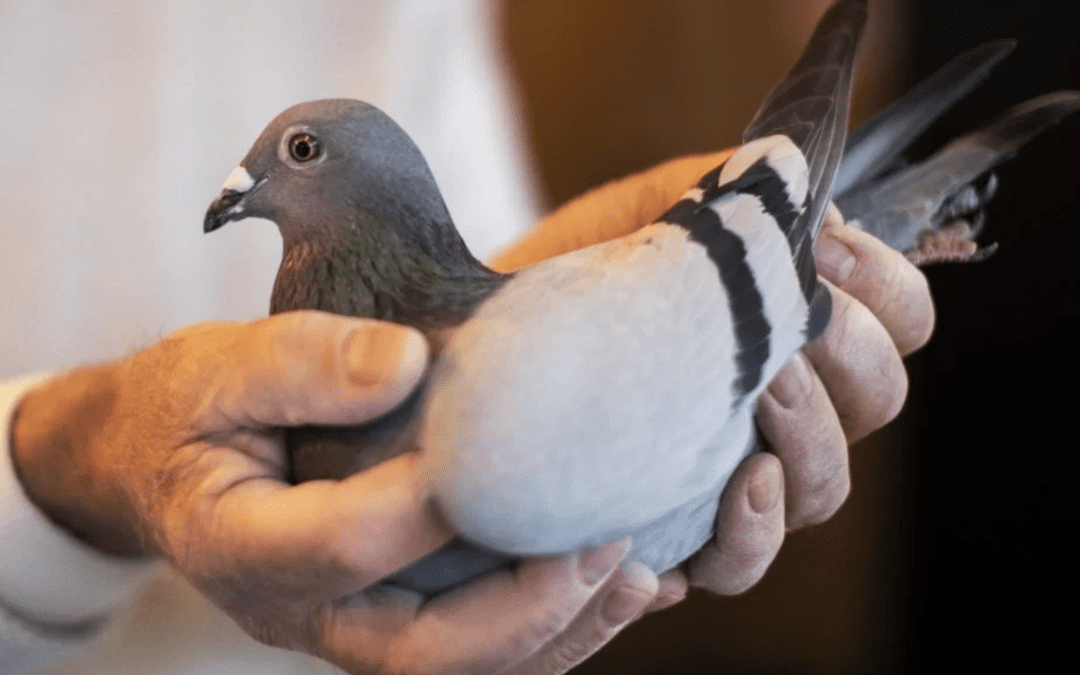
by Pigeon Patrol | Jun 21, 2023 | Bird Spike, Pigeon Predators, Pigeon Spikes, Pigeons, Pigeons in the News, Raccoons, Sparrows, UltraSonic Bird Control
Regardless of whether it’s around your home or a business premises, pigeons can be a nuisance.
While the odd one here or there is, of course, to be expected, if your property has become a popular place for these creatures to hang out, it can cause a number of problems.
• Bird droppings not only look unsightly, when wet they can be a serious slip hazard
• Pigeons do unfortunately deserve their reputation for being unhygienic and they do in fact carry more harmful diseases to humans than rats do
• Pigeon fouling and nest materials attract a whole host of insects including fleas, carpet beetles, flies, clothes moths and mealworm beetles
• Pigeon faeces is highly corrosive and can, therefore, cause extensive damage to your building if it sits there for an extended period of time
• Debris from flocks of pigeons can build up causing blockages to drains and gutters which can cause flooding and roof damage
• Clean-up costs can be high
As you may have gathered by now, it’s advisable to deal with pigeons before they become a huge problem. How exactly do you get rid of pigeons?
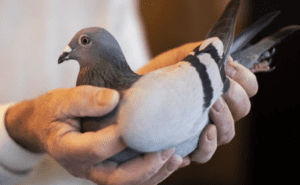
Remove any food sources
Pigeons are scavengers and will feed on nearly anything so make sure there are no possible food sources around your home or business premises. Don’t forget to check your roof and ensure that any outdoor areas are clean, no food scraps have been left out and that rubbish hasn’t been pulled out of your bins by other animals.
Store rubbish bags in metal bins with securely fitted lids so that pigeons can’t gain access to the contents. Try to avoid feeding pets outside or if you have to, clean away their bowl as soon as they’ve finished eating.
Install a decoy
If you look up at buildings you will probably notice some of them have fake Owls, lightweight kites in the form of hawk silhouettes, which are placed as a scare tactic. A good tip is to move the decoy on a regular basis because pigeons will get used to its presence and won’t be scared of t anymore – especially because it doesn’t make a noiseHomemade remedies
Some organic, homemade remedies have been known to be pretty effective. Try placing balls or containers of strong spices around your patio, exterior windowsills or wherever else pigeons tend to gather around your property. The best spices to use are chili powder, cayenne pepper, black pepper or cinnamon.
Don’t make your property pigeon-friendly
If it’s easy for pigeons to settle, they will. Check your property for pigeon-friendly places such as soffits, vents, chimneys, gutters and large gaps. Anywhere up high is naturally going to be an inviting place for these birds to nest and start a family. You can use a fine mesh screen to cover these areas to discourage pigeons from setting up home there.
Call a pest controller
The best thing to do if you’re faced with a pigeon problem is to call a pest controller. Highly experienced in this field, they will be able to provide you with a range of deterrent and proofing solutions which will provide a long-term solution.
Source
Pigeon Patrol Products & Services is the leading manufacturer and distributor or bird deterrent (control) products in Canada. Pigeon Patrol products have solved pest bird problems in industrial, commercial, and residential settings since 2000, by using safe and humane bird
deterrents with only bird and animal friendly solutions. At Pigeon Patrol, we manufacture and offer a variety of bird deterrents, ranging from Ultra-flex Bird Spikes with UV protection, Bird Netting, 4-S Bird Gel and the best Ultrasonic and audible sound devices on the market today.
Voted Best Canadian wholesaler for Bird Deterrent products ten years in a row.
Contact us at 1 877-4-NO-BIRD,(604) 585-9279 or visit our website at www.pigeonpatrol.ca
Pigeon/Pigeon Patrol / Pigeons Roosing / Vancouver Pigeon Control / Bird Spikes / Bird Control / Bird Deterrent / PIgeon Deterrent / Surrey Pigeon Control / Pest / Seagull deterrent / Vancouver Pigeon Blog / Birds Inside Home / Pigeons in the cities / Ice Pigeons / What to do about pigeons / sparrows, Damage by Sparrows, How to Keep Raccoons Away, Why Are Raccoons Considered Pests / De-fence / Pigeon Nesting / Bird Droppings / Pigeon Dropping / woodpecker control / Professional Bird Control Company / Keep The Birds Away / Birds/rats/seagull/pigeon/woodpecker/dove/sparrow/pidgeon control/pidgeon problem/pidgeon control/flying rats/pigeon problems/ bird netting/bird gel/bird spray/bird nails/bird guard












